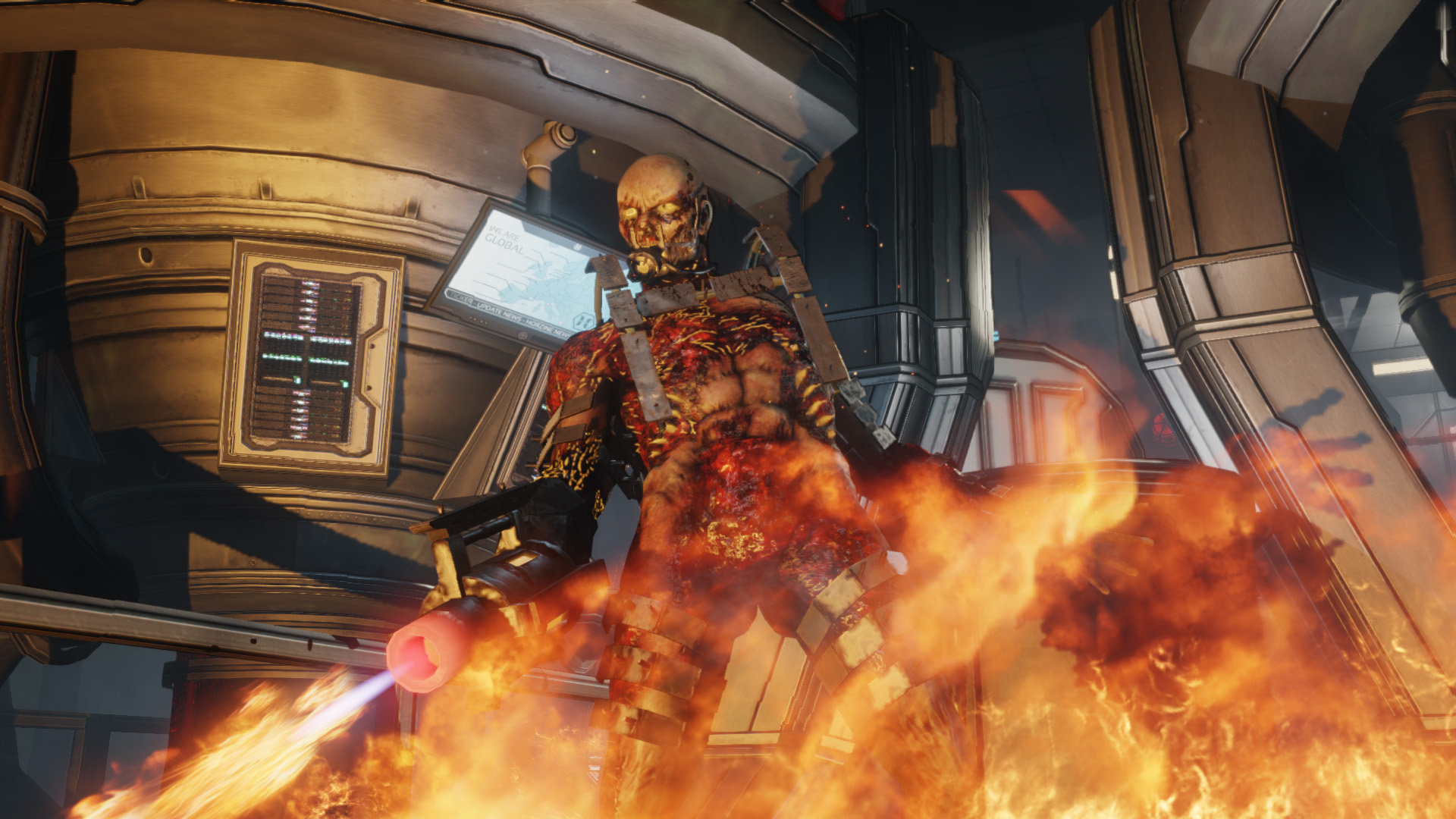Killing Floor 2 Review: Killing, Flawed

When it comes to horde mode gameplay on console platforms, we’ve battled through the likes of Left 4 Dead and its sequel with our friends, taken on the Locusts in Gears of War, and blasted our way through Call of Duty’s various attempts. One title that has been something of an ever-present for PC players though, is Tripwire’s Killing Floor. First released as an Unreal Tournament mod way back in 2005, the game finally made it to full game status in 2009 and some seven years later, this sequel marks the franchise’s console debut.
The core gameplay loop presented in Killing Floor 2 is familiar and simple. You and a squad of online buddies have to face wave after wave of zombie-alikes of different classes as they try to do what they can to take you all down. You collect spending money and XP for successful kills and for completing the wave. If you should manage to do the latter, you’re given access to a between-round trading pod that allows you to spend money on refilling your ammo, repairing your armour, or ditching your current weaponry and replacing it with something with a bit more oomph. After a short while, the next wave begins. This continues until you reach the final stage, where a fearsome boss will appear to try to put paid to your team once and for all.
In terms of the actual shooting action, everything works very nicely. Guns provide a good amount of feedback and explosive or ranged weapons provide enough of a bang to coat the area in the blood of the ZED horde. Pulling off a rewarding headshot sometimes causes the game to drop into “ZED time” where colours become desaturated and everything slows down for a few seconds for all players in the game. Whether this brings about a good feeling depends very much on what you’re doing at the time. If you’re lining up a headshot of your own it can be a bonus, but if you’re being attacked by a group of enemies and are frantically trying to heal yourself, it can be somewhat annoying.
Outside of that core gameplay loop, the meta-game revolves around levelling your character up across a number of classes, named “Perks” here. Before each game, you select one of the perks to play as – Commando, Support, Field Medic, etc. – with your initial choice altering your starting loadout. You’ll earn XP depending on the weapons that you use to kill enemies, so even if you’re playing Support, taking a group of foes out with a grenade launcher that you’ve found on the deck will grant you XP in the Demolitions class. This is a good approach, since it means that you can effectively level up multiple perks at a time and get to master the weaponry of alternate classes without having to drop all the way down to a base level in order to do so.
Reaching specific levels in each perk will provide benefits that can be configured pre-game, so once you’ve built up the required amount of XP, you may be able to choose between starting with 25% extra health and armor, or carrying 20% more ammo for each of your perk weapons, for example. Your choices obviously have a massive impact on the way things play out once you’ve got boots on the ground and when it comes to the harder difficulty levels, will almost assuredly be the difference between life and grim death.
Jumping into a game is nice and easy and there’s plenty of fun to be had just running through a quick match of Survival, either with strangers or a few of your pals. The online experience has been next to flawless during my time with the game, with no drops or lag to be found. Similar things could be said about almost everything else, given that all that Killing Floor 2 contains works exceedingly well. The problem, is that when you break it all down, it doesn’t contain very much.
What’s been described in this review is the entirety of the game. Once you’ve beaten a four, seven, or ten level Survival mode on a map and done away with the boss, the only choice you have in terms of gameplay variation is to play another four, seven, or ten level game of Survival on a different map. There is a half-hearted attempt at PvP where one half of the lobby plays as the ZEDs, but even the stronger of the zombie classes can be gunned down relatively easily, meaning that this almost always feels distinctly unfairly weighted against those who end up on the undead team.
Loot boxes could have mixed things up a bit and provided some variation and the developer has attempted to implement this, though not with any success. Every now and again, you’ll be awarded a crate which contains a random weapon skin but this is almost as much as a punishment as a reward, since you can’t open it until you’ve spent actual real-world money on a key. It’s a cheap device to extract cash from addicted players who have already paid out for the game and the paltry reward is not even close to being worth the extra expense.
Sure, there’s a nice selection of maps on offer, but the gameplay itself is the same each and every time you play. There are no in-level challenges or goals to be beaten and no leaderboards or weekly challenge maps to be found. You just survive and spend and survive and spend over and over with the content that’s provided until you get bored. This feeling of repetitiveness will destroy the meta-game for those that aren’t absolutely enamoured with the gameplay, for sure. After all, what’s the point at trying to level up your favourite class when the only place to use the skills you’ve earned is in the solitary game mode that you’ve beaten a few dozen times already in order to get there?
With those criticisms in mind, Killing Floor 2 is still fun to play. It’s just not fun that you should expect to last for very long.






Responses